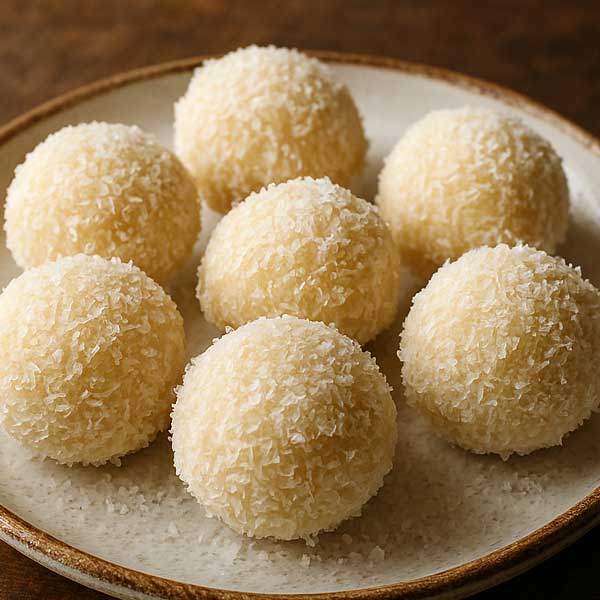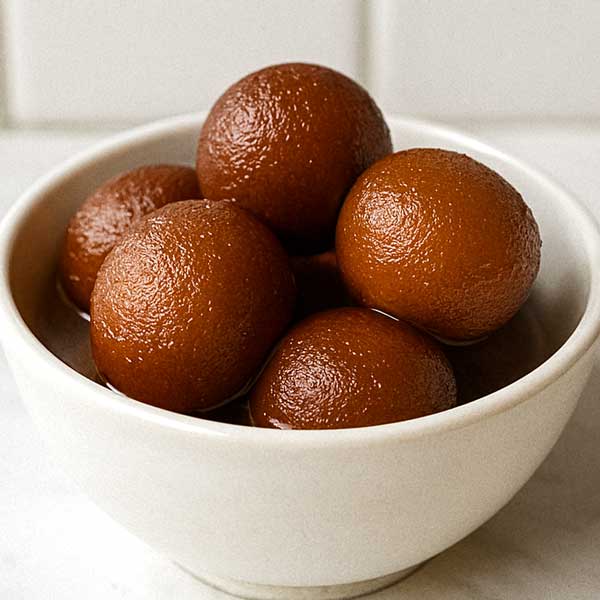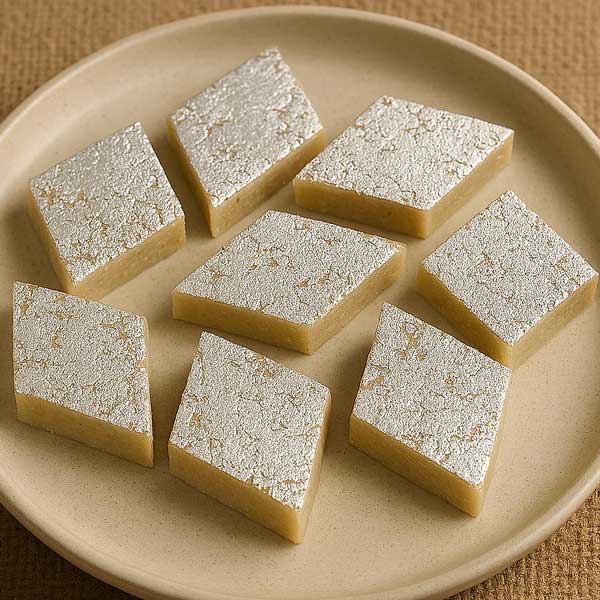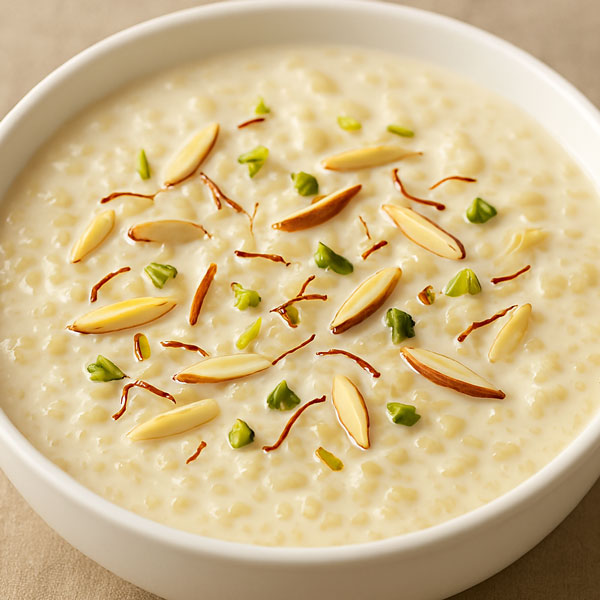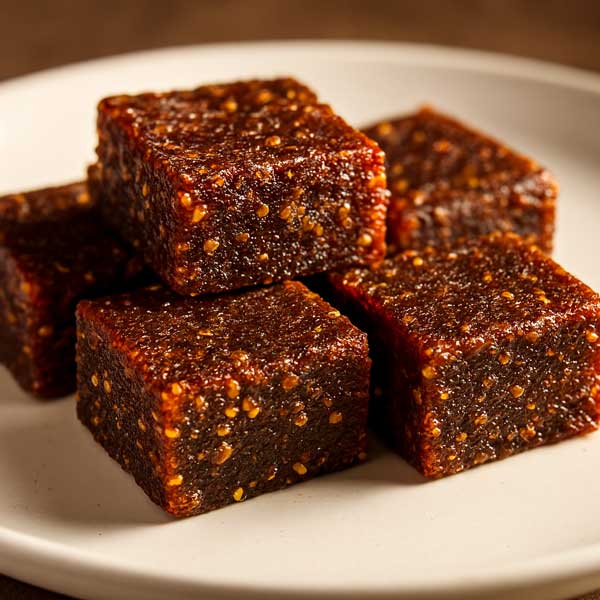Rasgulla Recipe (Soft and Spongy)
Rasgulla is a timeless dessert celebrated for its soft, spongy texture and subtle sweetness, soaked in delicate sugar syrup. This iconic treat has won the love of people across India and around the world, making it a must-try for anyone who enjoys traditional Indian sweets.

Rasgulla, also known as Rosogolla or Bengali rasgulla, is a popular Indian milk-based sweet made by simmering soft paneer balls in a light sugar syrup until soft, juicy, and spongy. Its delicate flavor and light syrup make it a favorite in Bengali cuisine, and with the right technique, you can recreate this iconic sweet in your own kitchen. If you’ve ever wondered how to make soft rasgullas at home, this simple rasgulla recipe without eggs is for you. Prepare this traditional Indian dessert using ingredients like milk, vinegar or lemon juice, and sugar. Serve it as part of a dessert platter along with other Indian sweets like gulab jamun, ladoo, or kheer. Whether you’re searching for festive mithai recipes, this step-by-step guide will help you make soft rasgullas at home using paneer (chenna) so that you get authentic halwai-style rasgullas every time.
Ingredients Needed
- Full cream milk: Use full-fat milk for best results, for a richer and softer chenna.
- White vinegar: Can be substituted with lemon juice as an alternative coagulant to curdle the milk.
- Water: Used to make the sugar syrup for boiling Rasgullas, to rinse the chenna and remove excess acidity, and to mix with flour if making a light slurry as a gentle binder.
- Granulated sugar: Provides sweetness to the syrup, you can also use caster sugar for faster dissolving.
- All-purpose flour (Maida): Optional ingredient to help bind the chenna balls slightly, can skip if you prefer a traditional texture.
How to Make Rasgullas at Home
- Boil Milk and Curdle It to Make Fresh Paneer for Rasgulla: Pour full-cream milk into a heavy-bottomed pot and heat until boiling, then add vinegar or lemon juice gradually to curdle into fresh chenna.
- Strain and Rinse Chenna to Remove Sourness: Strain the curdled milk through muslin, rinse under cold water, and gently squeeze to remove excess moisture.
- Knead and Shape Soft Paneer Dough into Rasgulla Balls: Knead the chenna into a smooth, crack-free dough, divide, and roll into round rasgulla balls.
- Prepare Sugar Syrup: Combine sugar and water in a deep pan, boil until slightly sticky to create the syrup.
- Cook Rasgulla in Boiling Syrup: Gently drop the paneer balls into boiling syrup, cover, and simmer until they double in size and become soft and spongy.
- Cool and Serve Rasgulla: Let the rasgullas cool in the syrup, then serve warm or chilled, optionally garnished with rose water or saffron for aroma.

How to Knead and Shape Smooth Rasgulla Balls
Kneading and shaping the chenna correctly is key to making soft, spongy Bengali Rasgulla at home. After straining and rinsing the chenna, knead it thoroughly on a flat surface until it becomes a smooth, crack-free dough; this ensures the Rasgulla balls hold their shape while cooking.
Divide the dough evenly and roll gently into round balls, avoiding any cracks, because cracks can cause the Rasgullas to break in the boiling sugar syrup. For best results, use a light hand while rolling and slightly moisten your palms if needed to prevent sticking, so each ball remains uniform and soft, ready to absorb the sugar syrup perfectly.
Tips to Make Soft and Spongy Rasgulla
Making perfect Bengali Rasgulla at home requires attention to detail and a few key tips to ensure soft, spongy, and melt-in-the-mouth results. Always use full-cream or full-fat milk for Rasgulla to get rich and tender chenna, and curdle it gradually with vinegar or lemon juice to avoid over-acidification.
When straining and rinsing the chenna, use cold water to remove excess sourness, and squeeze gently to retain moisture without making it dry.
When preparing the sugar syrup for Rasgulla, dissolve the sugar completely in water and bring it to a gentle boil, ensuring it is slightly sticky so the Rasgullas can absorb the syrup and swell properly.
Always drop the balls gently into the boiling syrup and simmer on medium heat, giving them enough space to expand. Cover the pan while cooking to maintain heat and moisture, then allow the Rasgullas to cool in the syrup to soak up flavor fully.
Another common doubts include why Rasgullas become hard, sink, or lose sponginess usually caused by low-fat milk or improper syrup temperature. Following these steps carefully will help you achieve soft, spongy Bengali Rasgullas recipe at home, perfect for festivals, Diwali, Holi, celebrations, or as a homemade Indian sweet treat.
Serving Suggestions for Rasgulla
Rasgullas taste best when served chilled, but they can also be enjoyed warm or at room temperature. For a festive touch, garnish with saffron strands, rose water, or cardamom essence. For a richer dessert, serve them soaked in thick rabri to make decadent Rasgulla Rabri, or pair with other Indian sweets like gulab jamun, kaju katli, or rasmalai.
Frequently asked questions
When rasgullas are likely overcooked or the chenna wasn’t kneaded enough, it becomes hard. Knead it until smooth and soft.
Too much water in the chenna or not enough kneading can cause rasgullas to break while boiling. Make sure to drain well and knead properly.
Boil for 12–15 minutes in sugar syrup, covered. They will puff up.
Yes, you can add saffron strands, rose water, or cardamom essence to the syrup or as a garnish to enhance the aroma and flavor.
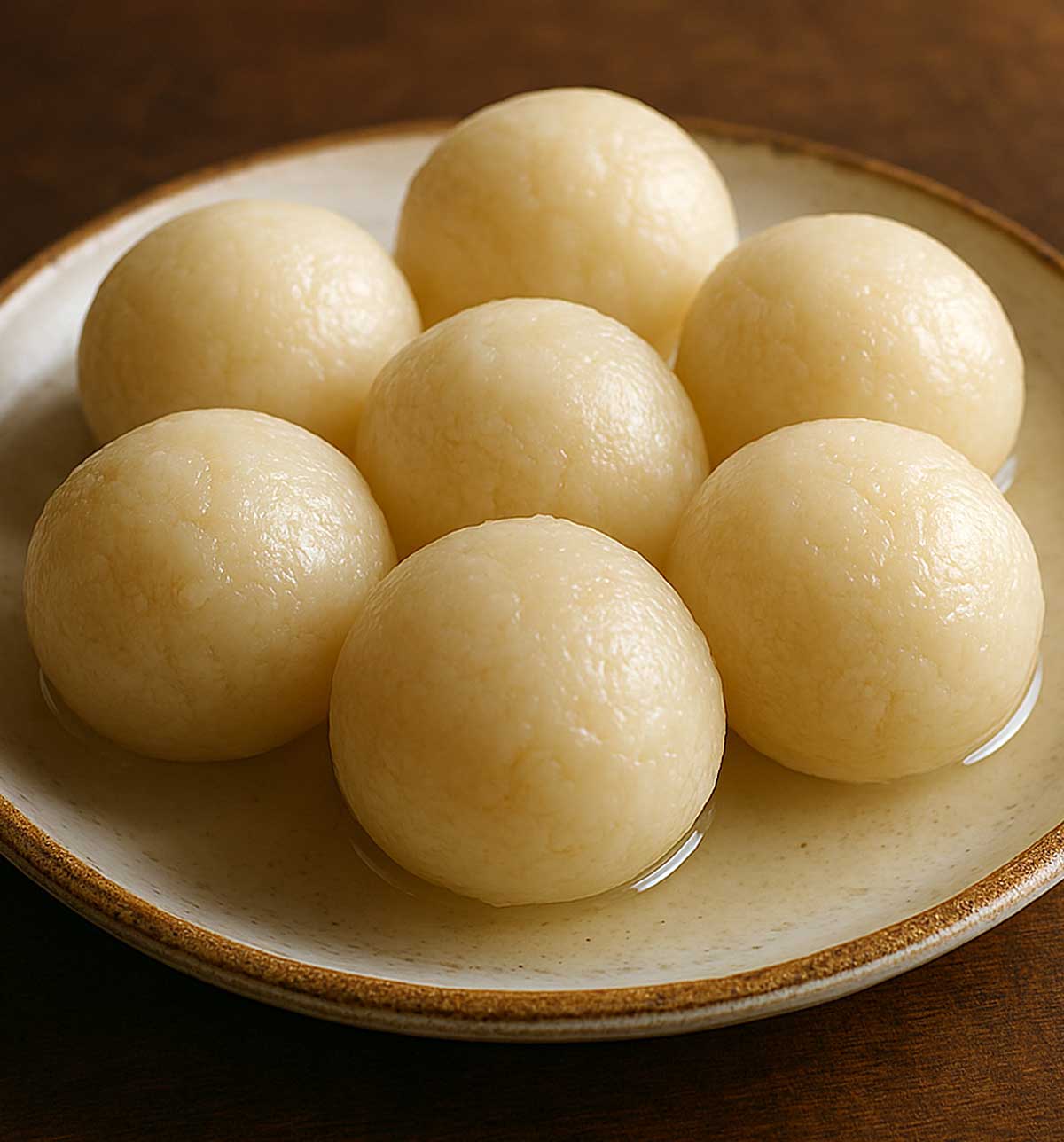
Recipe Card

Soft and Spongy Rasgulla
Equipment
- 1 Heavy-bottomed pot
- 1 Slotted spoon
- 1 Sieve
- 1 Deep frying pan
- 1 Muslin cloth or cheesecloth
Ingredients
- 1 liter full cream milk full-fat cow milk recommended
- 2 tbsp vinegar or lemon juice
- 1 cup water for rinsing chenna
- 1½ cups sugar 300 grams
- 4 cups water 1 liter
- 1 tsp rose water optional, for fragrance
- 1 tsp maida
Instructions
- Pour 1 liter of full cream milk into a large pot. Bring to a boil on high flame. Stir occasionally to avoid burning.
- Reduce the heat and add 2 tablespoons of vinegar slowly, stirring with a slotted spoon. The milk will split into chenna (curds) and whey.
- Place a muslin-lined sieve over a bowl and pour the curdled milk through it. Rinse the chenna with cold water to remove acidic taste. Squeeze gently to remove excess water.
- Transfer chenna to a flat plate or parat. Knead the chenna for 2–5 minutes until it becomes smooth and dough-like.
- Divide the dough into 10–15 equal portions. Roll each portion between your palms into smooth, crack-free balls.
- In a deep pan, combine 1½ cups sugar with 4 cups water. Boil on high flame until the sugar syrup becomes slightly sticky but not thick.
- Gently drop each rasgulla ball into the boiling syrup. Cook on high flame for 10–12 minutes. They will double in size. Optionally, add maida slurry to stabilize syrup.
- Turn off the flame. Let rasgullas rest in syrup for 10–15 minutes. Serve warm or chilled. Garnish with rose water or saffron if desired.
Notes
- Always use full-fat milk to get rich, soft chenna.
- Kneading well ensures soft, spongy rasgullas without cracks.
- Do not overcook rasgullas in sugar syrup or the rasgullas may harden.
- Add rose essence or cardamom powder for a traditional flavor.


